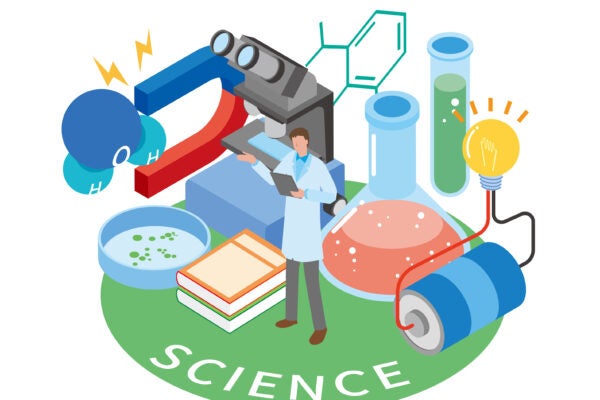When We Fear an Awkward Phone Call, We Often Turn to Text
Why making an ‘uncomfortable’ call may be good for our interpersonal connections — and health
Based on the research of Amit Kumar

It’s been years since you last spoke, and you’ve decided to finally reconnect with that long-lost friend.
You know hearing the person’s voice will make you feel good. But there’s a problem: that nagging fear of the awkwardness when you pick up the phone. So maybe it’s just safer to write a message, you tell yourself, and spare you both the possible discomfort of a call. After all, what’s the difference between calling and emailing, anyway?
There’s a big difference, according to a new paper from Amit Kumar, Texas McCombs assistant professor of marketing. In fact, if you choose talking over typing, you’re going to be happy you did — and feel a stronger sense of connection.
“You might learn that it went really well and wasn’t uncomfortable,” Kumar says. “Maybe your fears were misguided.”
Making the ‘Awkward’ Phone Call
Kumar has an interest in how people can better connect. “Humans are a social species,” he says. “Positive connections are really important for happiness and well-being, and that drives a lot of the hypotheses that I tend to have.”
In a recent series of experiments, Kumar and his co-author Nicholas Epley of the University of Chicago looked at how phone calls make us feel.
For the first experiment, participants were asked to think of someone they had not contacted in a while and predict how it would feel to email or call the person. When directly comparing those options, participants agreed that although they would feel more connected by talking on the phone, they also worried that would be more uncomfortable and would therefore prefer email. “People have these fears about awkwardness, and that seems to be part of what’s pushing them towards text-based media,” Kumar says.
Then, participants were randomly instructed to use either phone or email to reconnect with that person. Since many of the study participants were college students, they were often reaching out to friends they had lost touch with since moving away for university.
Participants’ predictions about connection — that they’d feel more strongly bonded after talking — were correct; their predictions about awkwardness — that the phone would make them feel more uncomfortable — were not. “There wasn’t any difference in how awkward they felt” between calling and emailing an old friend, Kumar says. That suggests people may often choose a less effective mode of communication. “It’s the thing that they seem to get wrong that’s driving their choices in this context rather than what they get right.”
Getting Personal with Strangers
Unlike on the phone, where speakers can interrupt or ask questions in real time, emails happen asynchronously: One person sends a message that is received and responded to sometime in the future. Does that difference matter? To find out, for the next experiment researchers brought participants into the lab for a randomly assigned live voice, video, or text chat in real time with a stranger. For their given communication medium, participants predicted how they would feel about the awkwardness and connection resulting from the upcoming interaction. They did not think the mode of communication would matter.
Participants then discussed intimate, personal questions (for example, describing a time they cried in front of someone else), taken from the “fast friends” protocol — also known for their appearance in the New York Times article, “To Fall in Love with Anyone, Do This.”
But, despite participants’ expectations, how they communicated with that stranger actually did matter, with both voice and video performing better than real-time texting.
“People felt significantly more connected when they communicated by talking rather than typing.” — Amit Kumar
“Notably, again, they didn’t feel any more awkward having a conversation hearing each other’s voices,” he says. And — perhaps surprisingly — using video to reveal personal information didn’t add much beyond the connection offered through audio-only communication. “Phone calls can create just as strong a sense of social connection as audio-visual media,” Kumar says. Hearing a human voice lets us know there’s another person on the other end of the line.
In a third experiment, when given the choice to type or call old friends, participants were guided more by fears of avoiding an uncomfortable call than by the expected upside of possible connection. “It really seems like people are worried that it’s going to be awkward when you interact with another person using your voice, and those concerns seem to be overblown,” Kumar says.
“When we think interactions are going to be awkward, that makes us more likely to choose text-based media.” — Amit Kumar
And emailing didn’t save time, either. The researchers timed participants reconnecting with their old friend and found the call took about the same amount of time as reading and responding to email.
Fear of the Phone
Our worries about having an awkward conversation can outweigh our realization that we’ll connect better by phone. But what are we so afraid of, really? Kumar has some ideas.
“Most of the time when you talk to somebody, it goes well. It’s not like you’ve had lots of horrible experiences talking to an old friend,” he suggests. “I’m guessing that people are thinking about the first few moments when you say, ‘Hello.’ Are you thinking they’re not going to say ‘hi’ back to you?” But even if your first 30 seconds of the call are somewhat uncomfortable, the rest is typically fine. “You’re on the phone for 15 or 20 minutes, and the majority of that is super pleasant. You feel like you caught up with somebody that you probably cared about,” he says.
“These fears people might be focused on aren’t really reflective of the actual interaction with someone else.” — Amit Kumar
The danger is these misplaced fears are discouraging us from building more authentic connections. “If your inclinations lead you to opt for texting, you will never experience the fact that your expectations could have been wrong,” Kumar says, urging people to instead pick up the phone. “It’s only by trying it out that you ultimately realize that, ‘Hey, this feels better.’”
Calling for Health
Not all technology offers us the same ability to strengthen our social connections. Tech developers are offering text-based communication tools for their speed and ease of use, as well as consumer demand.
“Just because this demand exists — because people make these choices to use these tools — that doesn’t mean they ultimately provide the most satisfaction,” Kumar says. “I think it’s important for technology to actually serve to connect human beings to one another.”
But so often we instead choose to rely on social media or an exchange via text, and that’s a shame. “Passively scrolling through a feed or sending an occasional text message is not the same as calling a distant relative up on the phone or video chatting with your best friend from high school,” Kumar says.
And although Kumar hopes his research empowers individuals to strengthen their interpersonal connections, his findings also apply to technology creators and policymakers: Technology can be designed to encourage not only texting but also talking with each other. And technologies that offer more positive connection can be made more accessible and affordable for the public.
“Not feeling connected to other people or feeling lonely can be a huge problem. It’s a public health concern that we need to take seriously.” — Amit Kumar
So, there’s no better time than the present to pick up the phone.
“People need to feel connected right now,” Kumar says. “It’s worth knowing how your beliefs might be mistaken and what makes you feel more connected.”
“It’s Surprisingly Nice to Hear You: Misunderstanding the Impact of Communication Media Can Lead to Suboptimal Choices of How to Connect with Others” is forthcoming, online in advance in the Journal of Experimental Psychology: General.
Story by Jeremy M. Simon
About this Post
Share:


